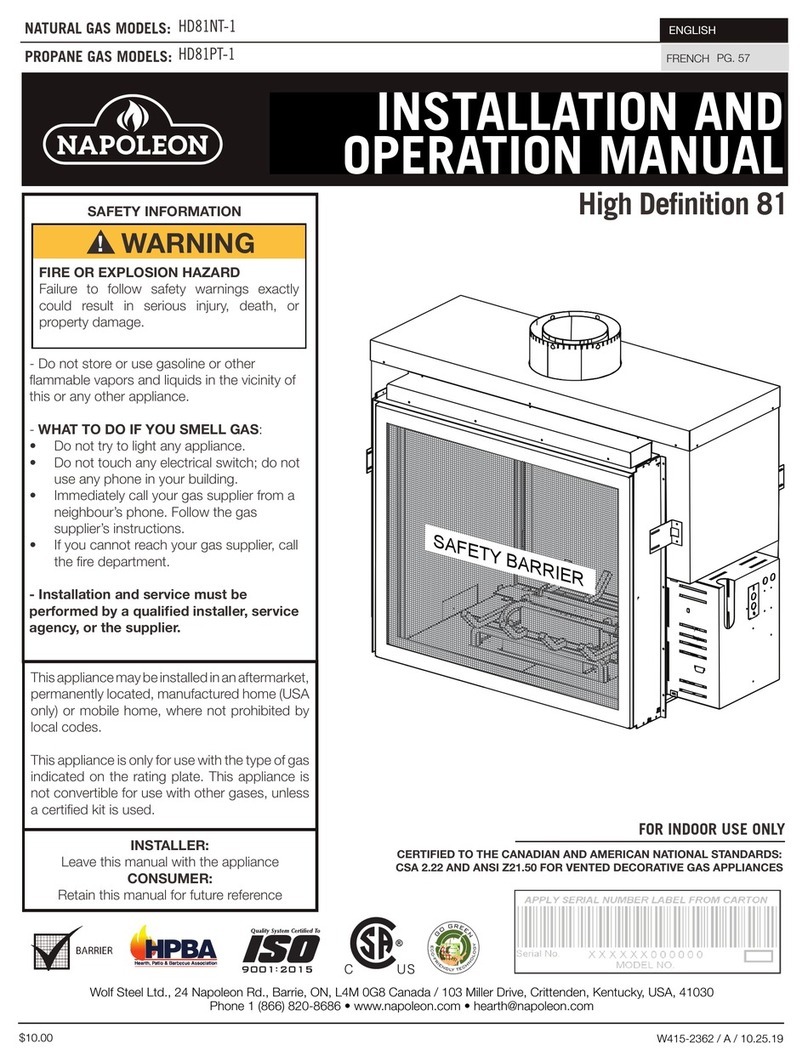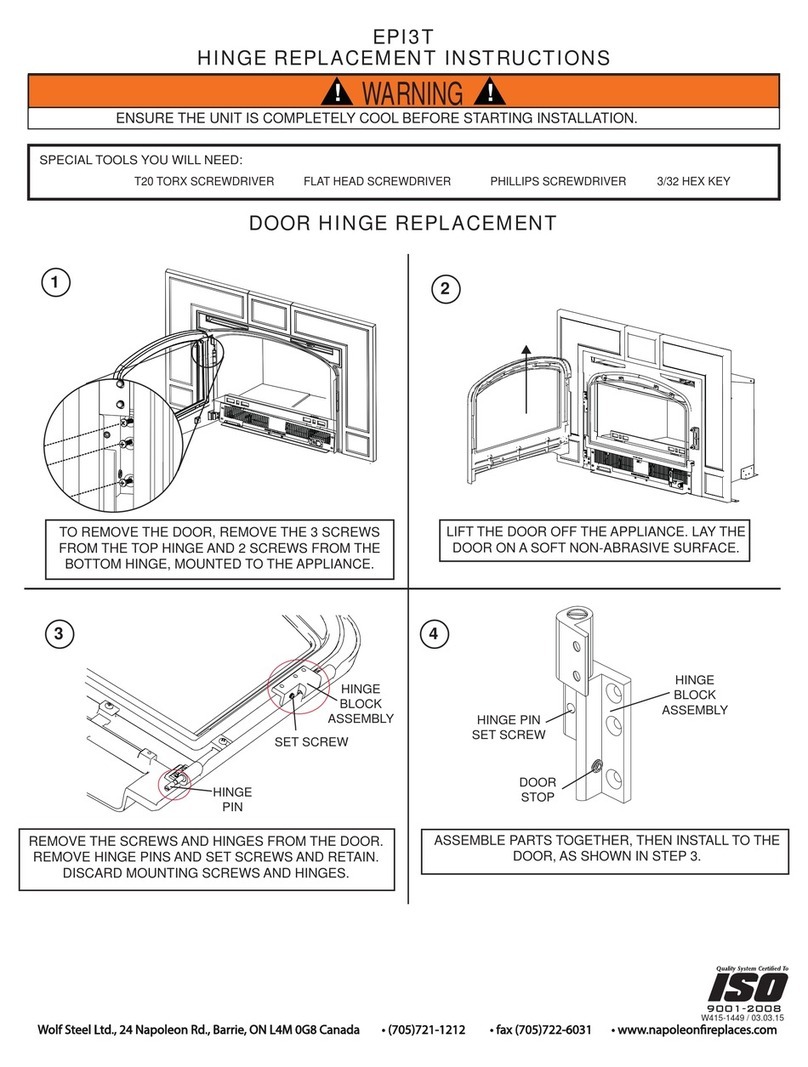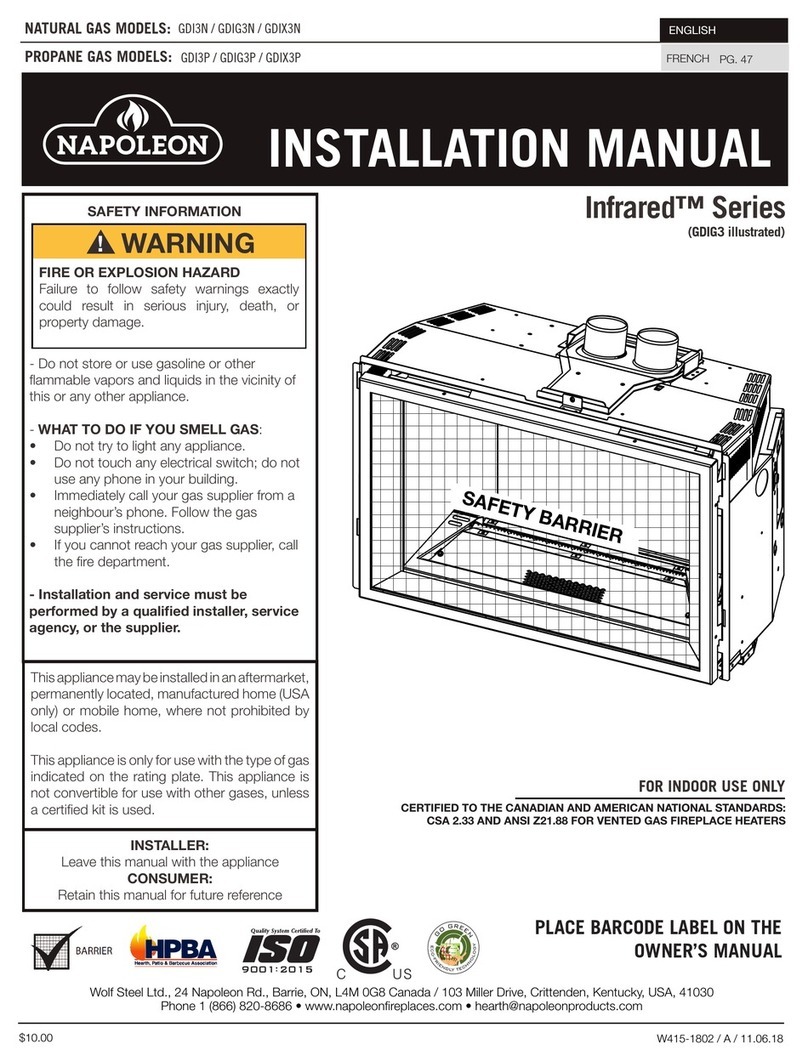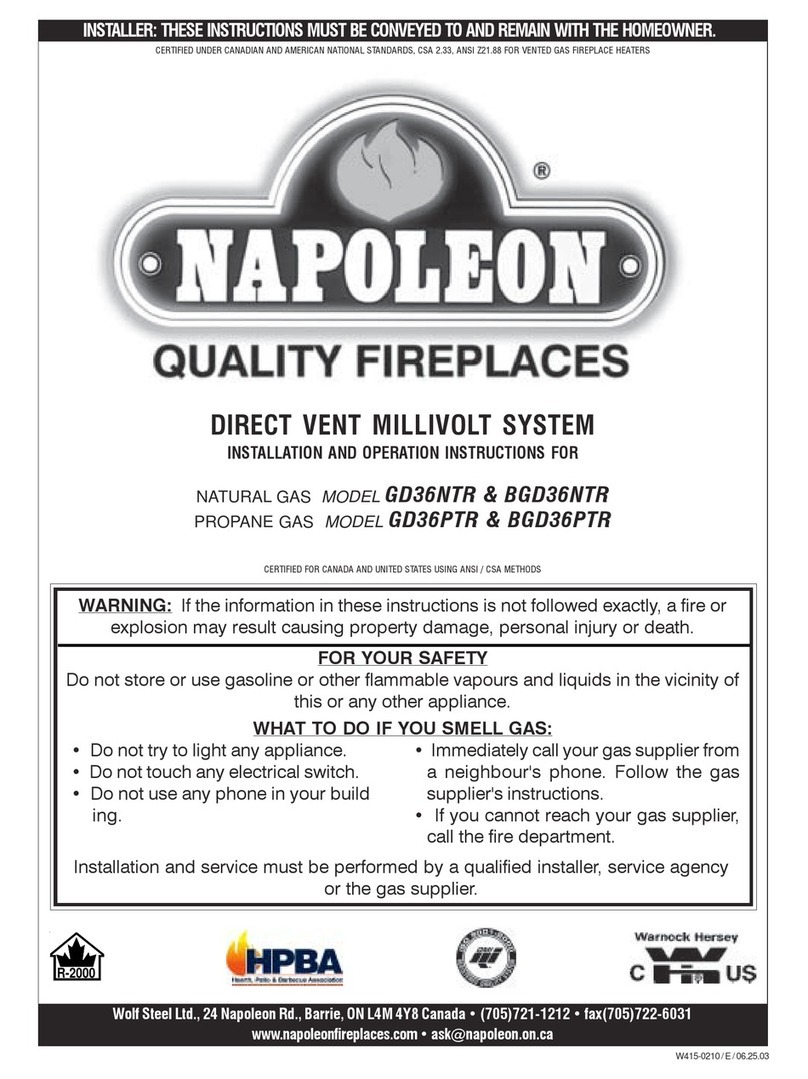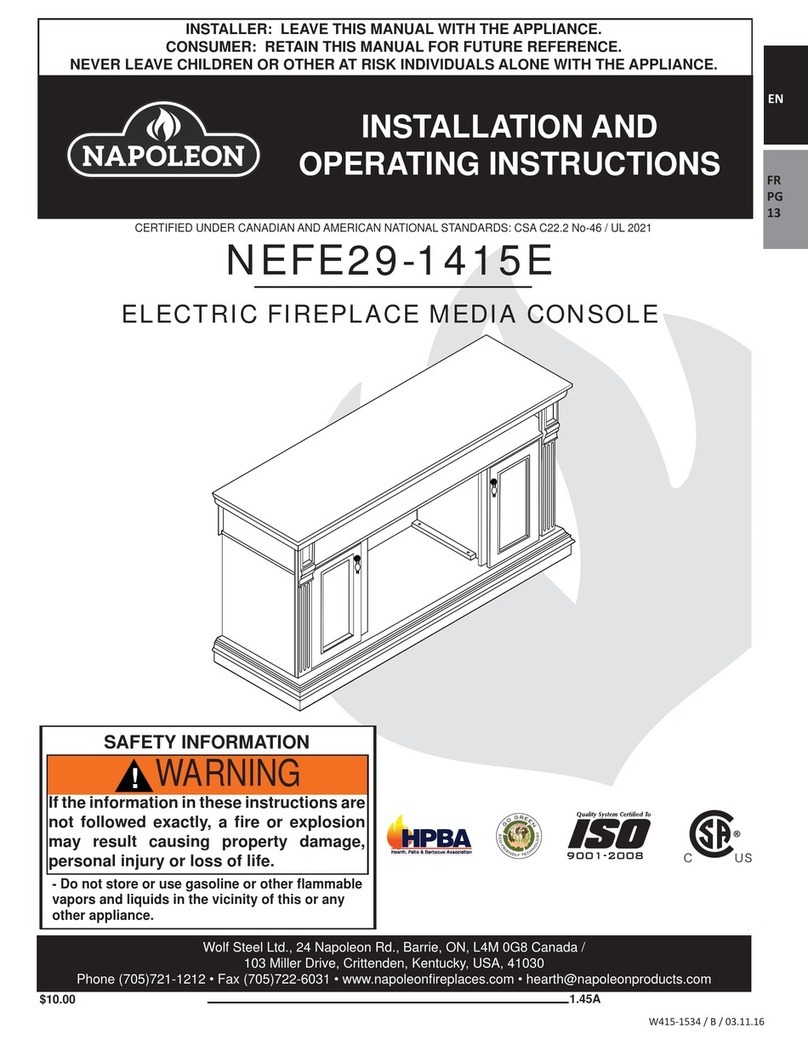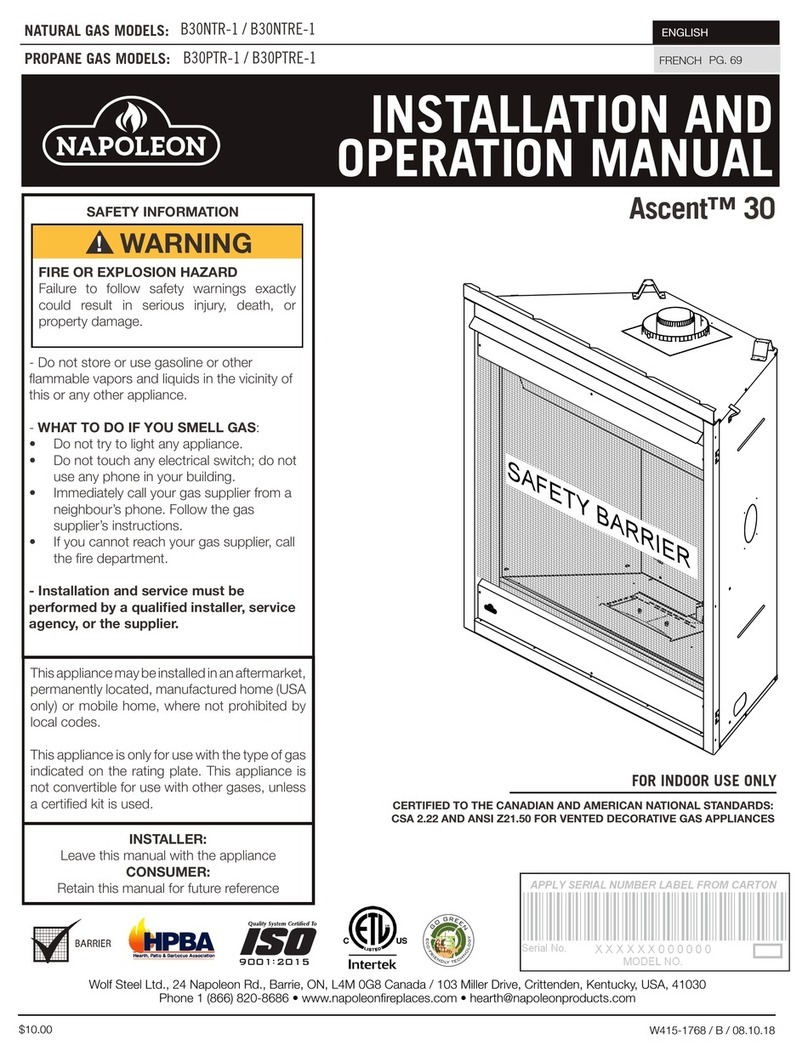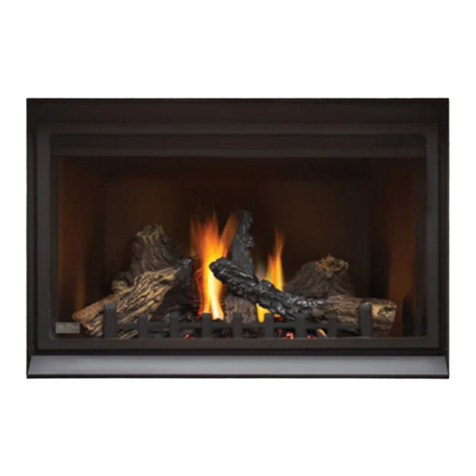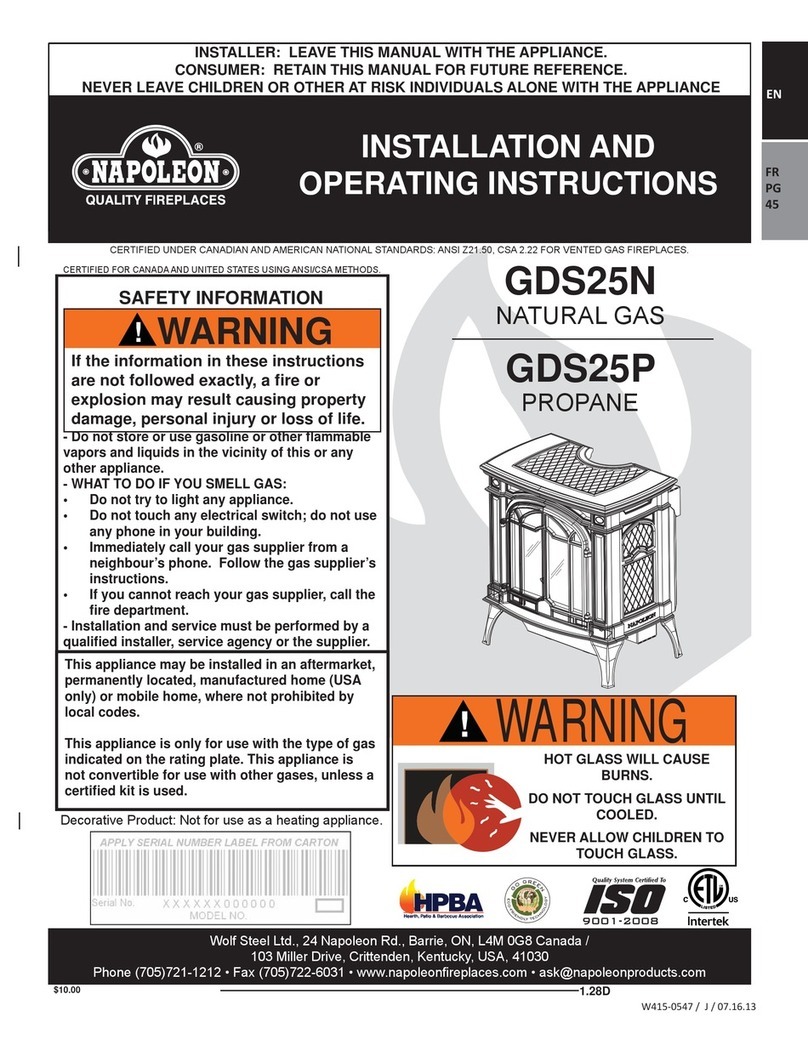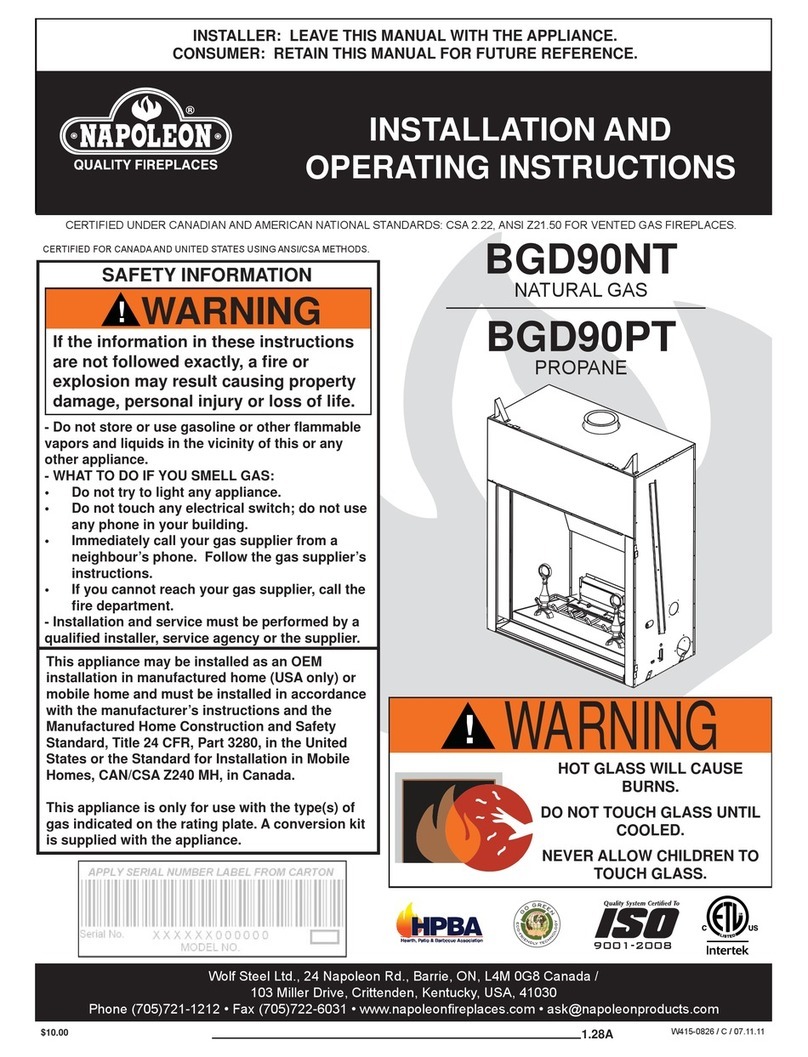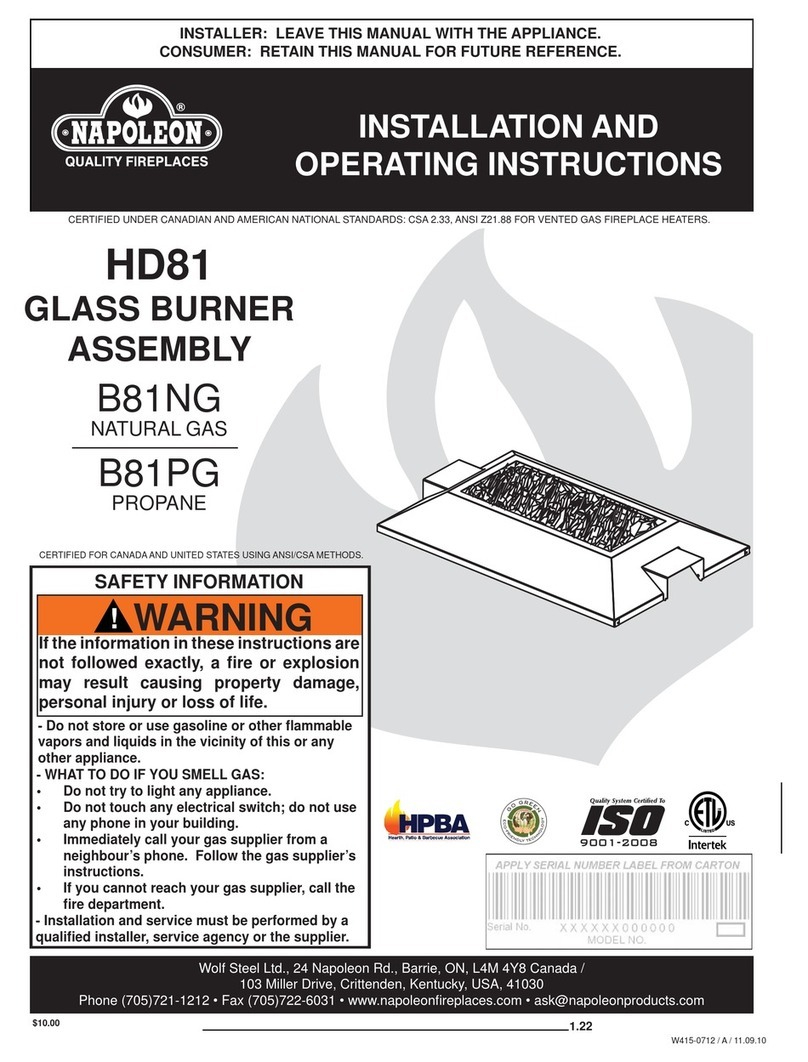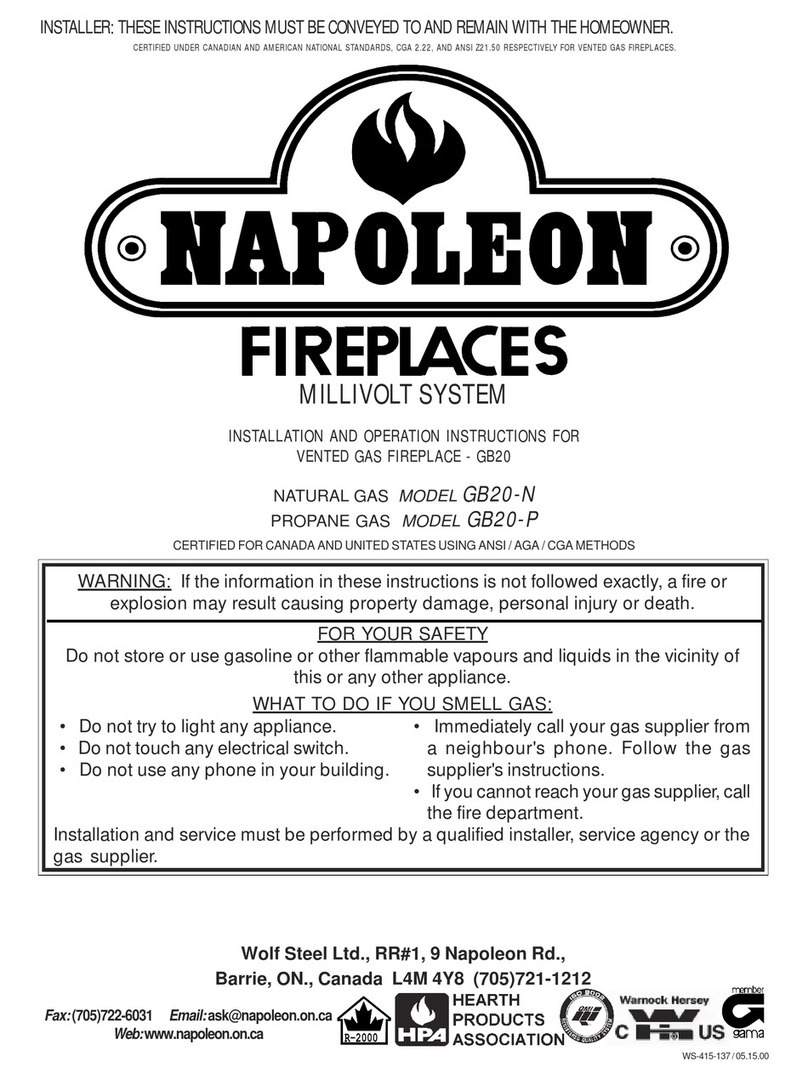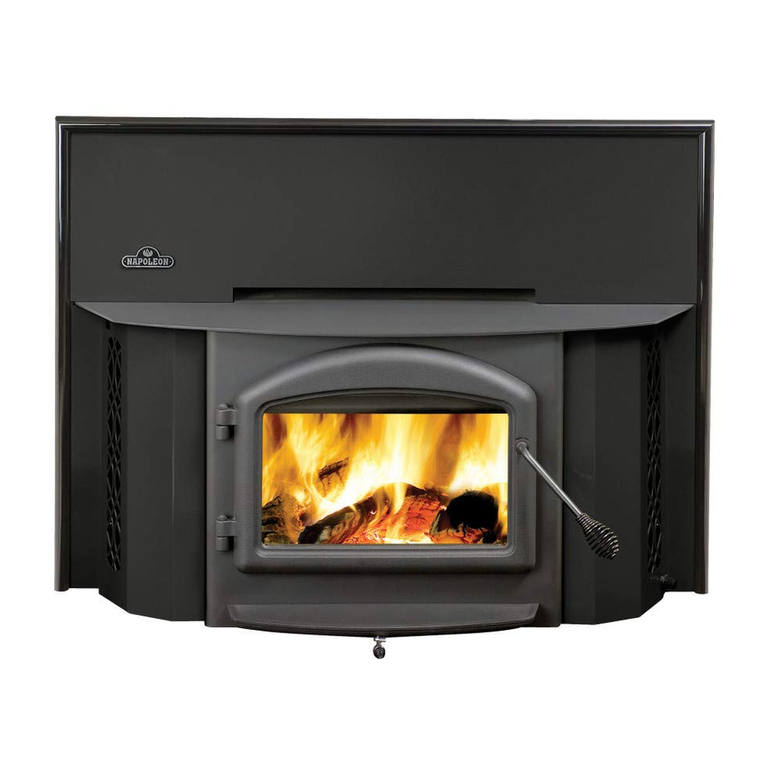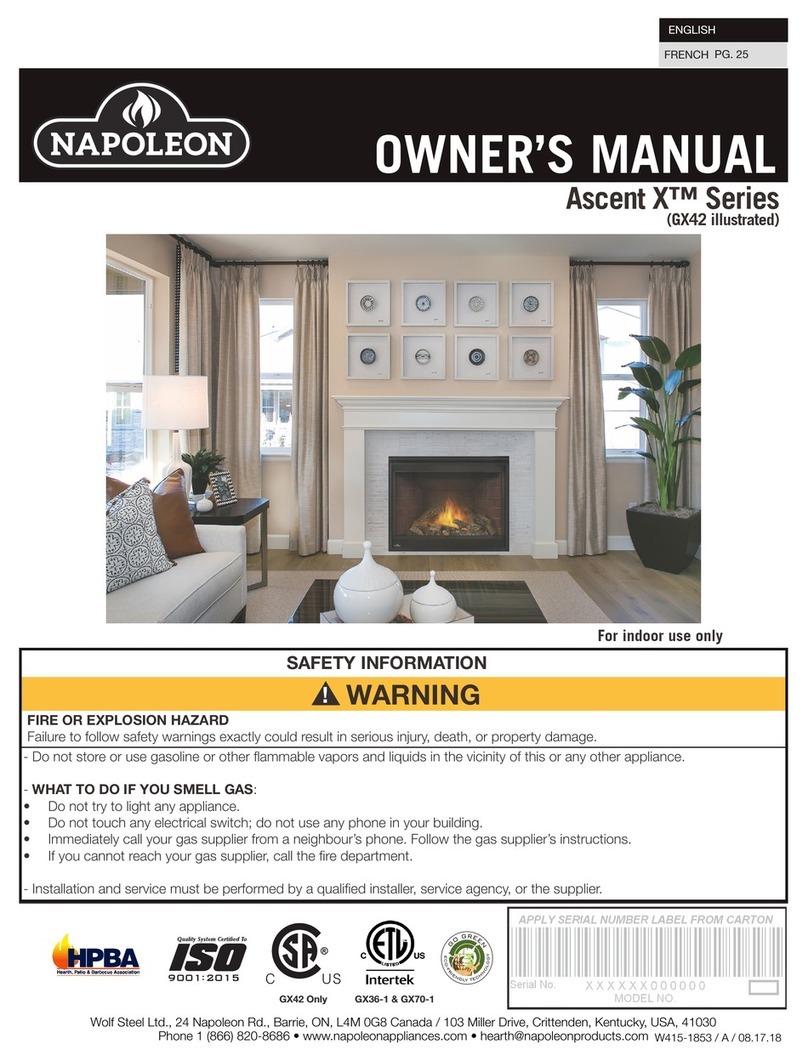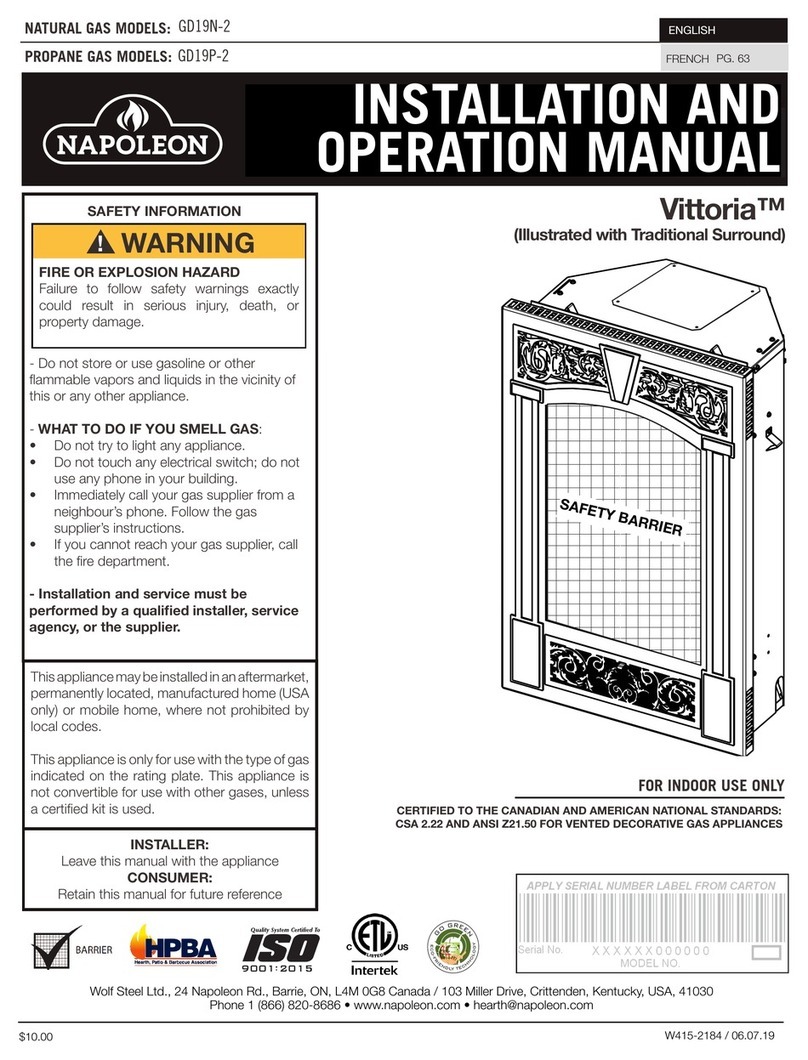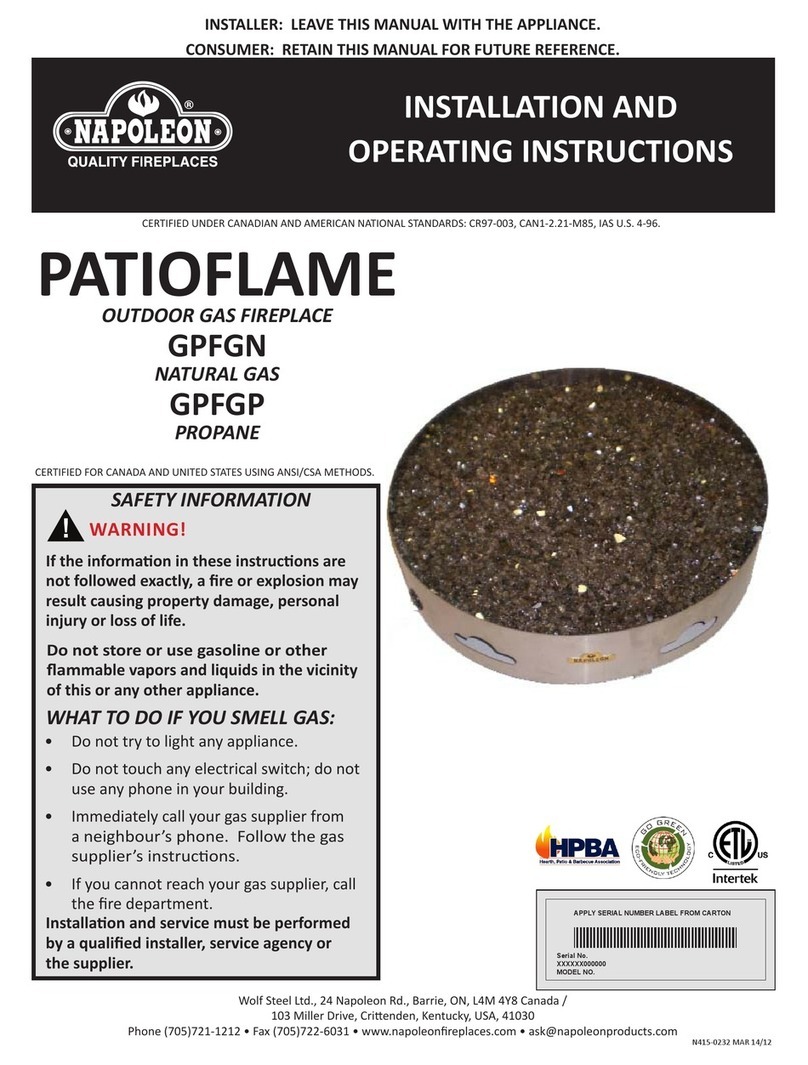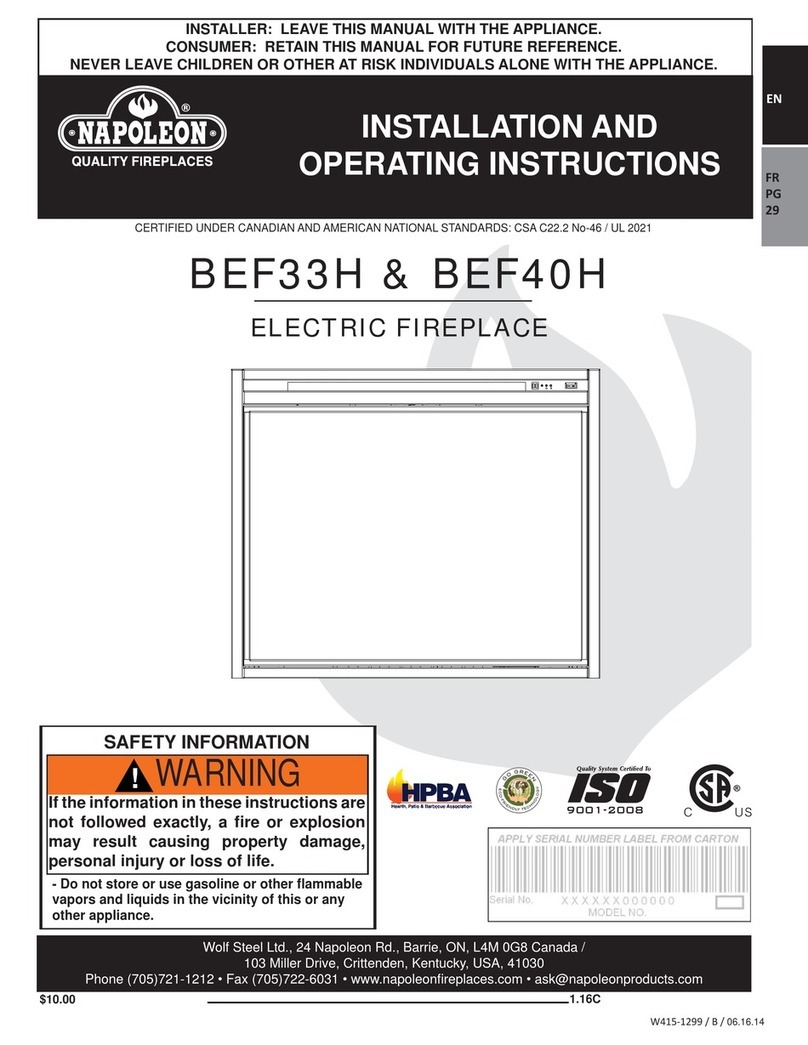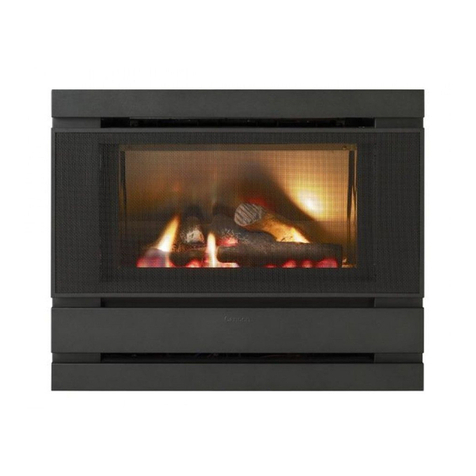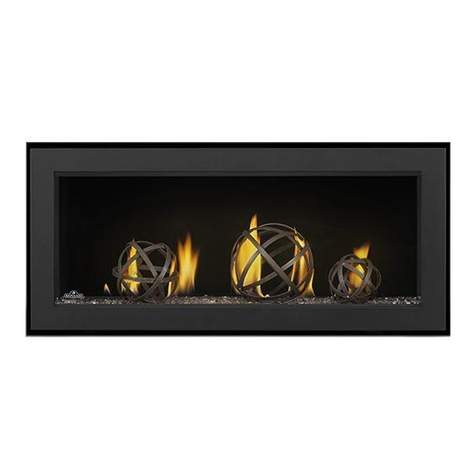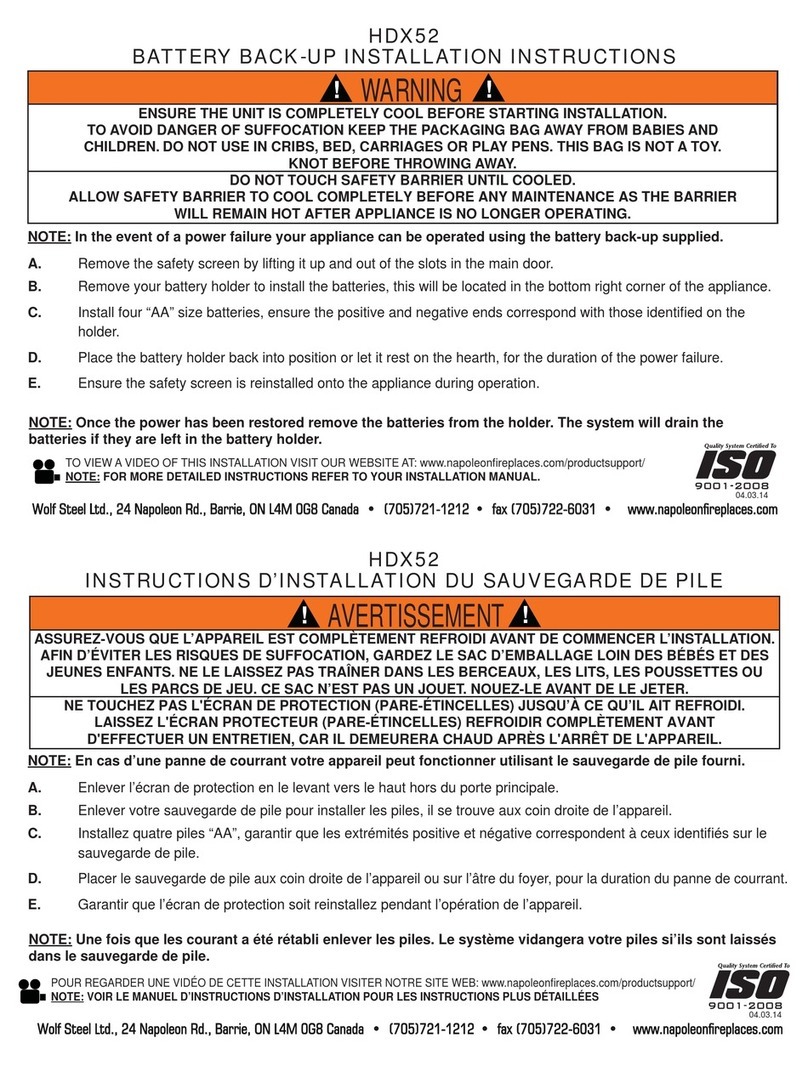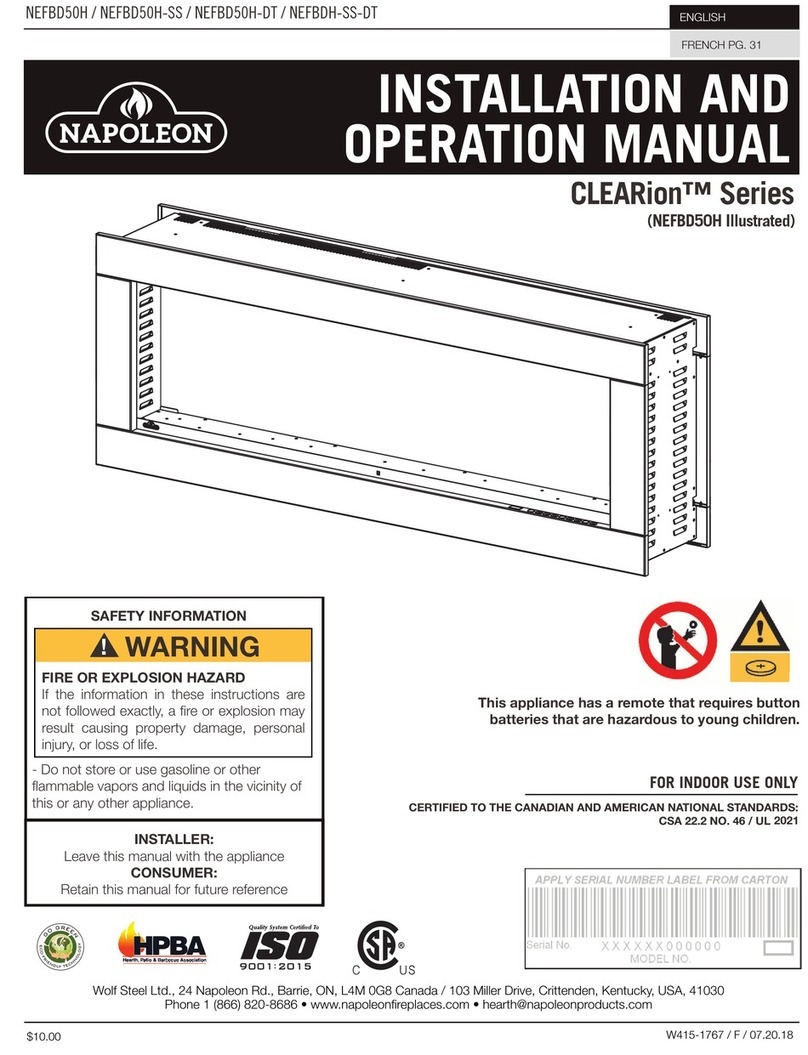
4
W415-0512 / D / 07.16.08
HOT SECONDARY AIR
FIBRE BRICKS
RÉFRACTAIRES
2 SIDES,
BACK
& BOTTOM
SECONDARY AIR
PRIMARY AIR
FLUE GLASS
CERAMIC
GLASS
DRAFT CONTROL
COMBUSTION AIR
INTAKE
OPEN CLOSED
DÉFLECTEUR EN FIBRE
Except for their different depths, models 1100, 1150, 1400,
1900, 1450 and the fireplace inserts 1101, and 1402 are
identical and use the same burning principles. They were
specifically designed over many months of research to meet
the 1990 U.S.A. EPA particulate emission standards and
have been extensively tested in Canadian and American
laboratories. This system is the most efficient, simple and
trouble free we know and works as follows:
Combustion air enters through two holes in the bottom cov-
ered by a single draft control.Air from the front hole goes up
on either side of the door into a preheating airwash located
across the top and then down the window to feed the fire
and also to ensure that the glass remains clean. Air from
this hole also feeds directly into the combustion chamber at
hearth level. Secondary air from the rear hole travels up the
back in the secondary air housing to the manifold located at
the top and shoots out laterally to oxidize the gases below
the smoke exit.
The combustion chamber is lined with high temperature fire-
brick on 2 sides, the back and across the bottom, with a layer
offibre bafflesat thetop tomaintain a high temperature in the
combustionchamber sothat gases mixingwith thepreheated
airfrom thesecondary air manifoldtube areeasily ignitedand
burned. The stove sides and back are shielded to direct the
heat upwards and forwards into the room.
Be sure to provide sufficient combustion air. There are many
other appliances in your home competing for air such as: a
kitchen range hood, forced air heating devices or a bathroom
exhaust fan.
Do not connect this unit to a chimney flue serving another
appliance.
Expansion/ contractionnoises during heating up andcooling
down cycles are normal and to be expected.
After extended periods of non-operation such as following a
vacation or a warm weather season, the fireplace may emit
a slight odour for a few hours. This is caused by dust parti-
cles on the firebox burning off. Open a window to sufficiently
ventilate the room.
CALIFORNIA PROP 65 WARNING:
Use of this product may produce smoke which
contains chemicals known to the State of California
to cause cancer, birth defects, or other reproduc-
tive harm.
PEDESTAL MODELS ONLY
If the outside air feature of the stove is utilized, you should
never experience a shortage of combustion air. If you choose
not to utilize outside air and experience draft or smoking
problems, you may need to open a door or window.
WARNING: Burning your unit with the ash dump
door open or ajar creates a fire hazard that may
result in discoloration to the gold plated door,
internal damage to the stove or a house and/or
chimney fire.
To ensure that the ash dump door is tightly closed, allow the
door to snap shut dislodging anything (ashes or pieces of
coal) that may be stuck in the opening.
LEG MODELS ONLY
If you experience smoking problems, you may need to open
a door, a window or otherwise provide some method of sup-
plying combustion air to the unit.
Donot use abrasivecleaners to clean these parts. Buff lightly
with a clean dry cloth.
Prolonged high temperature burning with the door ajar may
cause a permanent rainbowing effect on the lower edge of
a gold plated door.
Porcelain enamel components must be handled with care.
The baked-on finish is “glass”. If struck, it will chip. Touch-up
paint is available through your Napoleon dealer.
Ifthe glass isnot keptclean permanentdiscolouration and /or
blemishes may result. Normally a hot fire will clean the glass.
The most common reasons for dirty glass include; not using
sufficient fuel to get the stove thoroughly hot, using green or
wet wood, closing the draft so far that there is insufficient air
for complete combustion. If it is necessary to clean the glass,
use a soft cloth with a nonabrasive cleaner.
DO NOT CLEAN GLASS WHEN HOT!
Theglass isvery strong butdo notlet burning fuelrest against
it and always close the door gently. If the glass should ever
crack while the fire is burning, do not open the door until the
fireisoutanddo not operatethestoveagain untiltheglasshas
been replaced with a new 5mm thick plate of ceramic glass,
available from your Napoleon / Wolf Steel Ltd. dealer.
DO NOT SUBSTITUTE MATERIALS.
TO REMOVE THE GLASS: When the unit is cool, open
the door and remove the screws and brackets holding the
glass in place. Remove all broken glass. Wrap the edges
of the new glass with a U-shaped strip of fiberglass gas-
ket, covering 1/4” on each side. Place the glass with the
fiberglass gasket in position and replace the brackets and
screws. When finished, you should be able to move the
glass slightly, horizontally and vertically.
FIGURE 1
GENERAL INFORMATION
CARE OF ALL PLATED AND ENAMELED PARTS
CARE OF GLASS
We suggest that our woodburning hearth products
be installed and serviced by professionals who are
certified in the U.S. by the National Fireplace
Institue® (NFI) as NFI Woodburning Specialists or
who are certified in Canada by
Wood Energy Technical
Training (WETT).
